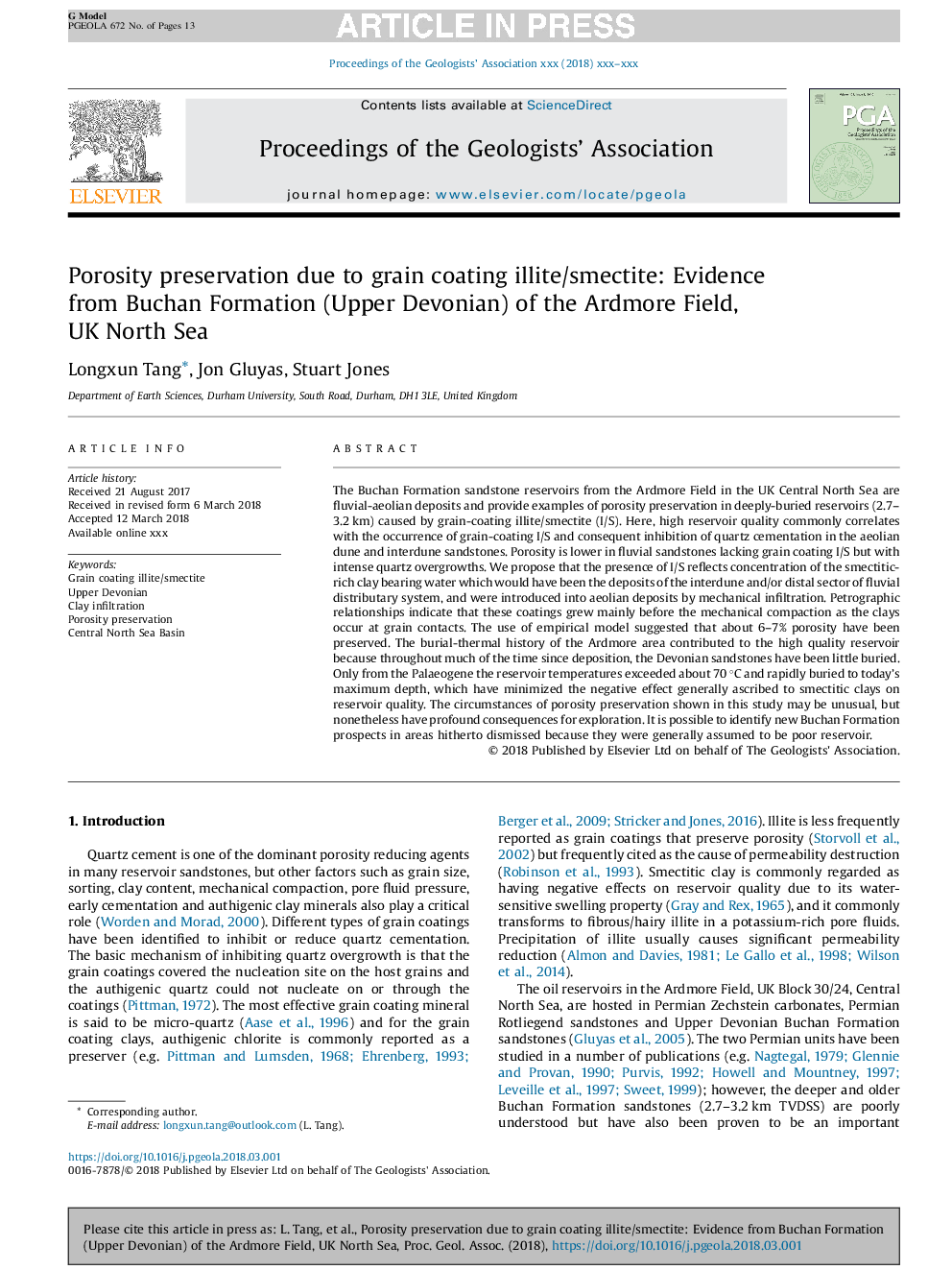| Article ID | Journal | Published Year | Pages | File Type |
|---|---|---|---|---|
| 8914587 | Proceedings of the Geologists' Association | 2018 | 13 Pages |
Abstract
The Buchan Formation sandstone reservoirs from the Ardmore Field in the UK Central North Sea are fluvial-aeolian deposits and provide examples of porosity preservation in deeply-buried reservoirs (2.7-3.2â¯km) caused by grain-coating illite/smectite (I/S). Here, high reservoir quality commonly correlates with the occurrence of grain-coating I/S and consequent inhibition of quartz cementation in the aeolian dune and interdune sandstones. Porosity is lower in fluvial sandstones lacking grain coating I/S but with intense quartz overgrowths. We propose that the presence of I/S reflects concentration of the smectitic-rich clay bearing water which would have been the deposits of the interdune and/or distal sector of fluvial distributary system, and were introduced into aeolian deposits by mechanical infiltration. Petrographic relationships indicate that these coatings grew mainly before the mechanical compaction as the clays occur at grain contacts. The use of empirical model suggested that about 6-7% porosity have been preserved. The burial-thermal history of the Ardmore area contributed to the high quality reservoir because throughout much of the time since deposition, the Devonian sandstones have been little buried. Only from the Palaeogene the reservoir temperatures exceeded about 70â¯Â°C and rapidly buried to today's maximum depth, which have minimized the negative effect generally ascribed to smectitic clays on reservoir quality. The circumstances of porosity preservation shown in this study may be unusual, but nonetheless have profound consequences for exploration. It is possible to identify new Buchan Formation prospects in areas hitherto dismissed because they were generally assumed to be poor reservoir.
Keywords
Related Topics
Physical Sciences and Engineering
Earth and Planetary Sciences
Geology
Authors
Longxun Tang, Jon Gluyas, Stuart Jones,
